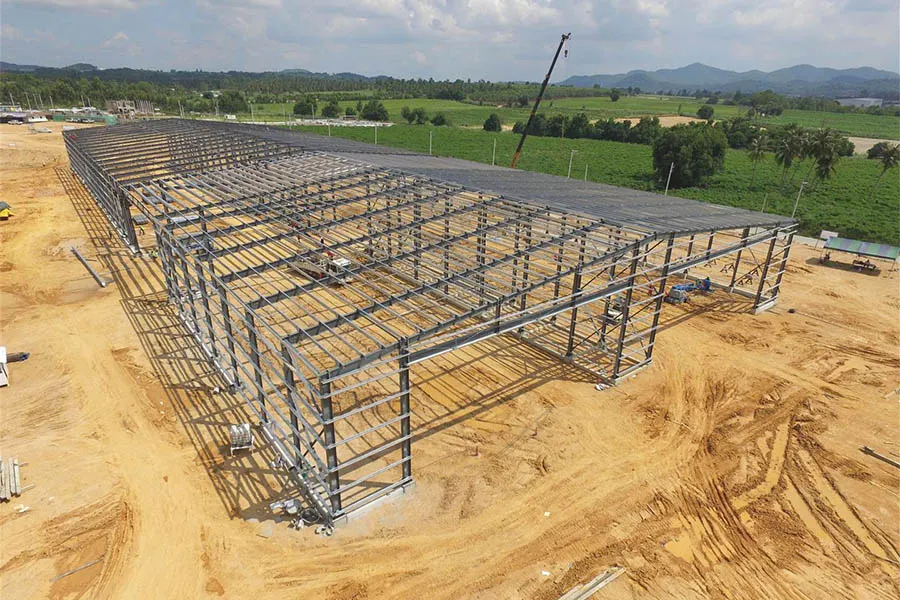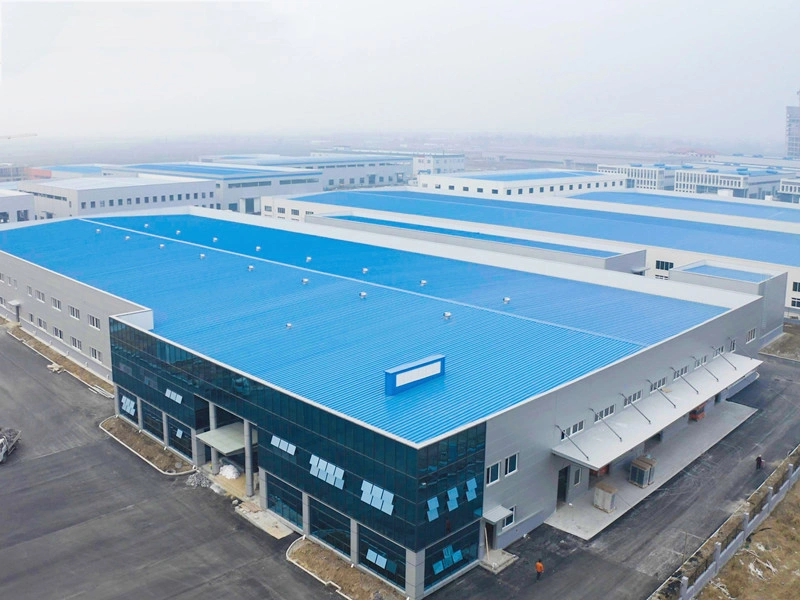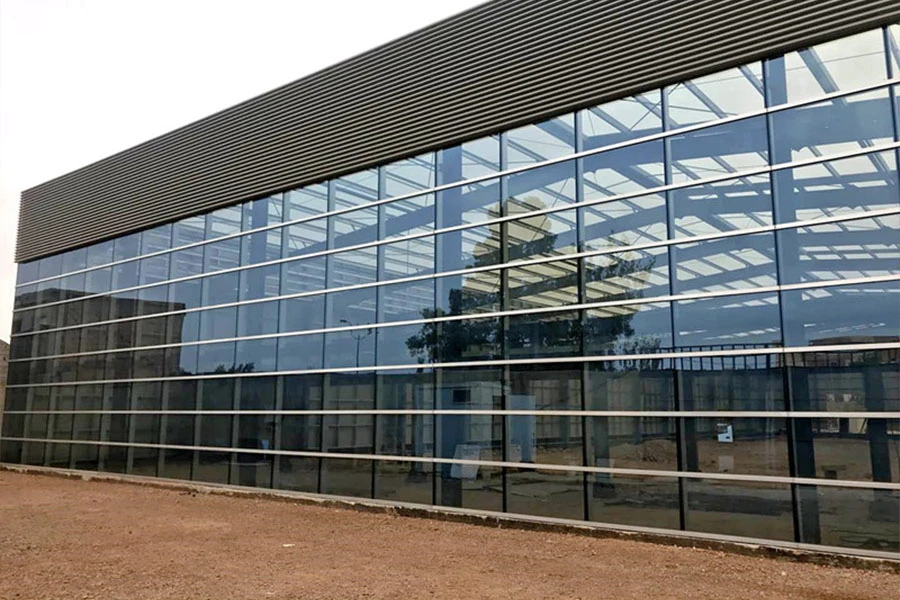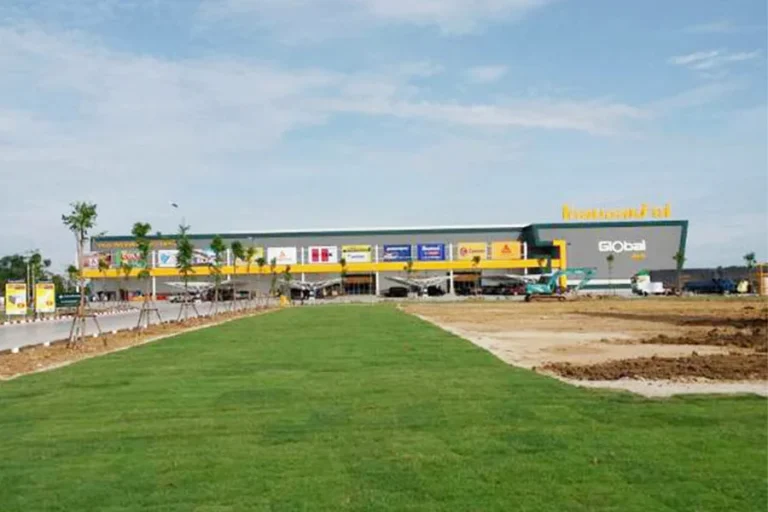What Are the Main Components Included in Steel Frame Cost Per m²?
Structural Steel Materials
Steel frames are the backbone of any steel building. They’re what hold everything up, and they make a big difference in how much you pay per square meter.
Columns, Beams, and Bracing Systems
Columns and beams are like the skeleton of your building. They’re usually made from H-shaped or box-shaped steel. Columns stand tall to carry weight, while beams stretch across to hold up floors or roofs. Bracing systems, like cross braces or portal frames, keep things steady against wind or shakes. For example, a Steel Structure Sports Hall with 1526 m² used H columns and beams with white paint to look sharp and stay strong.
Roof and Wall Purlins
Purlins are like extra helpers. These skinny steel pieces sit on beams or rafters to hold up roof and wall panels. They’re often C-shaped or Z-shaped and made from cold-formed steel. More purlins mean more steel, which bumps up the cost per m².
Fabrication and Engineering Services
It’s not just about steel. You need brainpower to make it all work safely.
Custom Design Fees
Building a steel structure isn’t a one-size-fits-all deal. Designers and architects plan out every piece to fit your needs. The bigger or trickier your project, the more you’ll spend on custom plans.
Structural Calculations and Load Testing
Engineers do the math to make sure your building won’t fall down. They check how it’ll handle wind, snow, earthquakes, or even heavy stuff like cranes. For example, a Paint Shop in Thailand with 8800 m² had a portal frame and four 5-ton cranes, needing super careful math to keep it safe. This step adds to the price but keeps things solid.
Erection and Installation Costs
Putting it all together takes work, and that’s a big chunk of the cost.
On-Site Assembly Labor
You need skilled folks to bolt or weld the steel pieces together. They make sure everything lines up just right. This labor isn’t cheap, especially if you need a big crew for a huge project.
Equipment Rental and Safety Measures
Big cranes, lifts, and scaffolding are must-haves to hoist heavy steel. Plus, you need safety gear like harnesses and fences to keep workers safe. All this equipment and safety stuff adds to the bill.
Ancillary Materials and Accessories
Fasteners, Connectors, and Sealants
Bolts, rods, plates, and silicone sealants hold everything tight and keep water out. These small bits might seem tiny, but they’re key to the cost per m².
Insulation, Cladding, and Coatings
Insulations like fiberglass wool insulate the building so that it can be kept warm or cool. Steel sheets with glass wool insulation are typically used for roof and wall panels. Paint or galvanizing coatings avoid rust, extending the life of the steel. Such attachments add cost but save money later.
What Factors Influence Steel Frame Cost Per m²?
How Material Grades and Thickness Affect Pricing
Not all steel is the same. High-strength steel like Q355B costs more than basic Q235B but holds up better. Thicker steel means more weight, which jacks up material and shipping costs. Painted surfaces also add to the price but keep rust away.
The Role of Design Complexity in Overall Costs
Simple boxy buildings are cheap. But fancy designs with big open spaces or overhangs? Those need heavier beams or trusses, which cost more. An Auto Parts Factory with a 40m span used a portal frame, needing beefy steel that raised the price.
Transportation and Logistics Considerations
Getting steel to your site isn’t free. Faraway or tricky locations mean bigger shipping bills. Huge beams might need special trucks or even police escorts, which really adds up.
Impact of Local Labor Rates on Construction Expenses
If workers in your area get paid a lot, your costs go up. Also, if there aren’t enough skilled welders or installers, you might face delays or higher wages.
How Does Steel Frame Construction Compare to Other Building Methods in Terms of Cost?
Comparing Steel Frames to Concrete and Wood Structures
Steel buildings weigh less than concrete ones, so you save on foundation costs. Unlike wood, steel doesn’t warp or rot, so it stays strong no matter the weather.
Short-Term vs Long-Term Cost Implications
Steel might cost more upfront than wood because of materials and engineering. But painted steel lasts ages, cutting down on fixes later. Wood needs constant care to avoid bugs or water damage.
Maintenance Requirements and Associated Costs Over Time
Steel needs way less upkeep than wood or concrete. Wood might need termite sprays, and concrete can crack. Steel’s anti-rust coatings mean you spend less on repairs over time.
How Can Investing in Steel Frame Construction Lead to Long-Term Savings?
Energy Efficiency Benefits from Insulated Panels and Smart Design
Insulated panels with fiberglass wool keep heat or cold in check. For example, color-coated steel sheets with glass wool insulation cut down on heating and cooling bills. Smart designs make your building super energy-efficient for years.
Durability Against Weather, Pests, and Fire Hazards Reducing Replacement Costs
Steel laughs at fire, bugs, and mold—unlike wood. It also handles storms and quakes better, so you don’t need to replace parts as often.
Why Should I Consider XINGUANGZHENG Steel Buildings for My Project?
Who We Are at XINGUANGZHENG
XINGUANGZHENG makes awesome prefab steel buildings for folks all over the world—Africa, Europe, you name it. We’ve built stuff like warehouses, factories, malls, and supermarkets, and we know our stuff.
Our Expertise in Delivering High-Quality Steel Buildings
Decades of Experience in Steel Structure Manufacturing
We’ve been at this for years. Take our Pakistan Chemical Factory—it’s a multilayer frame with 600 tons of steel, handling tricky loads like a pro.
Advanced Production Facilities with ISO-Certified Processes
Our factories use top-notch tech and follow strict rules to make sure every piece is perfect. You get the same quality whether it’s a tiny shed or a giant workshop.
Key Features of Our Steel Frame Products
Precision-Engineered Components for Easy Assembly
We use fancy CAD/CAM tools to make beams and columns fit like a puzzle. This cuts down on-site time, saving you money.
Corrosion-Resistant Coatings for Extended Lifespan
Our painted finishes look cool and keep the rust away. This means your building stays strong for years without extra costs.
Flexible Design Options Tailored to Your Needs
Need a huge workshop like our 14,000 m² Shipyard in Brazil? Or a sleek Supermarket in Angola? We can tweak designs to fit exactly what you want.
Transparent Pricing Based on Real Value
Detailed Quotations Including All Major Cost Elements
We give you the full scoop—steel, labor, bolts, insulation, shipping, everything. No guesswork, just clear numbers for your budget.
No Hidden Charges – Full Breakdown of Steel Frame Cost Per m²
We don’t sneak in extra fees. You get a straight-up breakdown of costs, so you can plan without surprises.
FAQ
Q: What’s the average steel frame cost per m²?
A: It covers steel (beams, columns), design fees, fabrication, assembly labor, bolts, insulation, and cladding, depending on what you pick.
Q: Is wood cheaper than steel frames?
A: Wood might be cheaper at first, but steel lasts longer and saves on bugs, fire, or upkeep costs.
Q: How does design complexity change costs?
A: Fancy designs with big spans or multi-levels need more steel and math, which bumps up the price per m².
Q: Can pre-engineered systems save money?
A: Yup! They cut waste and speed up building, lowering material and labor costs big time.
Q: Do insulated panels really help with energy?
A: Totally! They keep heat or cold steady, cutting your energy bills for years.









